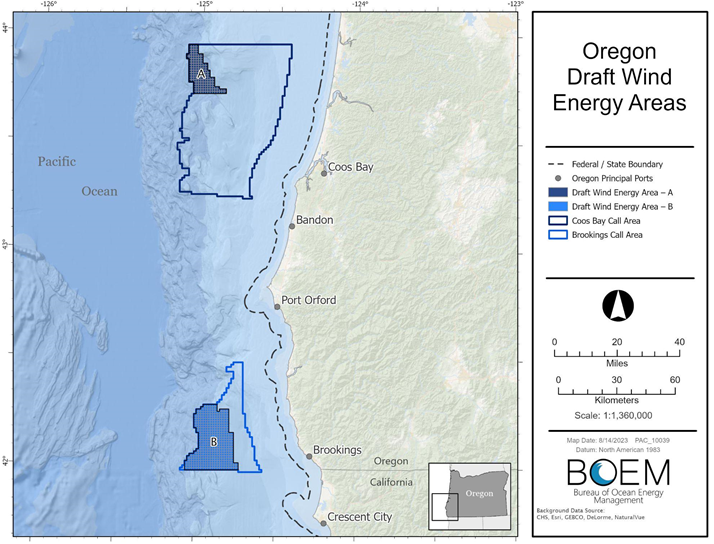
Today, the Bureau of Ocean Energy Management (BOEM) announced two Draft Wind Energy Areas (WEAs) off the coast of Oregon. These draft areas, spanning approximately 219,568 acres, are now open for a 60-day public review and comment period.
BOEM collaborated with NOAA’s National Centers for Coastal Ocean Science (NCCOS) to identify the draft areas. Working in partnership with BOEM and other federal agencies, NCCOS researchers gathered data from academia, government sources, industries, Native nations, and local groups to build comprehensive spatial models of the Oregon coast. The models helped BOEM determine offshore areas that are both suitable for wind energy development and have the least potential for conflict with other ocean uses and sensitive ecosystems.
In April 2022, BOEM invited public input on potential wind energy leasing activities off the Oregon coast. Following careful consideration of stakeholder feedback, BOEM identified the Coos Bay and Brookings Call Areas as prime locations for further evaluation, and NCCOS began the spatial modeling process to analyze the areas.
The modeling included data from several NOAA offices with unique expertise in the marine environment. NOAA’s National Marine Fisheries Service (NOAA Fisheries) provided technical assistance regarding marine mammals and endangered and threatened species, as well as important marine habitat. NOAA Fisheries also collaborated with the Oregon Department of Fish and Wildlife to provide an analysis of important fishing grounds.
Expanding wind energy development to Oregon signals progress toward cleaner energy for the nation, while creating jobs and economic opportunities for the state. The next step is to designate final WEAs for National Environmental Policy Act (NEPA) review.
